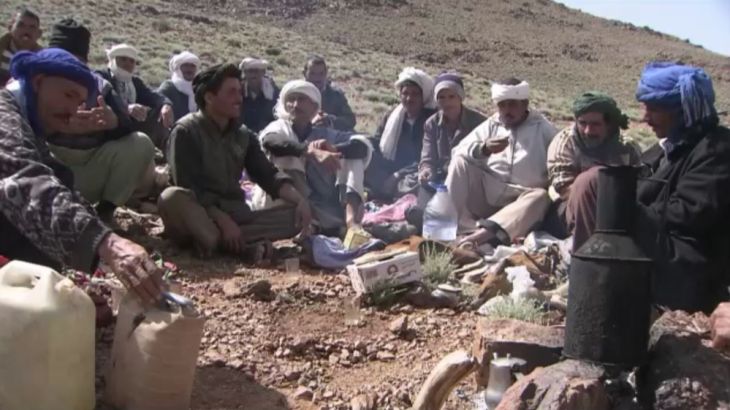
The Last Nomads of Morocco
Morocco’s nomadic tribes are gradually giving up their traditional way of life to offer their children formal education.
Many of Morocco‘s nomadic communities living across the Atlas Mountains, like the Ait Atta tribe, are gradually changing their way of life from roaming herders to part settlers – or what sociologists call “a sedentary lifestyle”.
But such fundamental change comes challenges, as well as opportunities.
Keep reading
list of 4 itemsUS university ties to weapons contractors under scrutiny amid war in Gaza
UC Berkeley chancellor speaks out about ‘Gaza brutality’
Are US graduation ceremonies the latest battleground for Gaza protests?
Traditionally, nomads do not receive a formal education. However in the past decade, there have been moves to introduce what they call “tent schools” to try and equip their children for the modern world. But for them to attend school, their families have to remain in one place all year. It might also mean that the children ultimately leave their parents’ traditional nomadic way of life.
“They told us they’d provide education for our children if we settled in a particular place,” says nomad Daoud Ariba.
Helping with that adjustment are social activists like Ali El Amine. It was his idea to bring the tent schools to the region, with help from international agencies and the Moroccan government.
Our goal is to see nomads at all levels of education, in college and even university. We want them to get diplomas and not to stop at the primary level and then return to cattle grazing.
“Our goal is to see nomads at all levels of education, in college and even university. We want them to get diplomas and not to stop at the primary level and then return to cattle grazing,” says El Amine who is also the President of Chems Association.
In addition to providing tents, the association serves as a liaison between the nomads and local authorities.
“We try to integrate the children into charity groups and obtain financial support for them,” he says.
While the tent schools are a first step towards settling the nomads, the schools’ remote locations, harsh winters and heavy rains pose challenges for teachers and pupils.
“When I came here, I walked for two hours,” says teacher Abdallah al-Sahraoui. “I got an idea about the area from the road condition. The road was difficult with dangerous bends. I had to walk up and slide down the mountain. I had to walk for two hours to reach the school.”
The tough mountain terrain also poses risks. Teenager Ittou lost her leg after she suffered a snake bite in the middle of nowhere. “My father came running and I told him I was bitten. He poured household bleach on the wound. But it did not work. He carried me on the back of a mule because of the lack of transportation,” she says.
The nomads who settle also have to learn new skills, like basic building techniques.
“We were nomads living in tents, but now we’ve settled here,” says Mohamed Ait Trichet of the Tidakline Nomads Association. “We’re learning construction. We make clay brick to build our houses and other facilities.”
The change for the Ait Atta is happening and there’s hope that nomad communities that have been struggling below the poverty line will start to create a more viable way of life.
Education has undoubtedly been the catalyst for change for the nomad tribes. Sedentarisation will take time and not all the nomads embrace the change.
“I don’t see any difference between nomadic or non-nomadic children in terms of their capabilities and their potential”, says teacher Mohamed El Bakri. “But I see in their eyes the desire to learn and discover new things.”
Morocco is not a wealthy country, but it wants to modernise and give its people the best chances in life. But if the process of change continues in this way, these proud people and their children really will be the last nomads of Morocco.